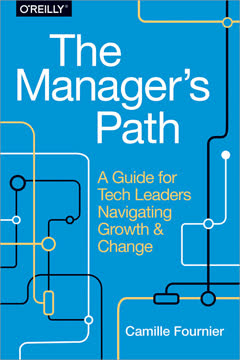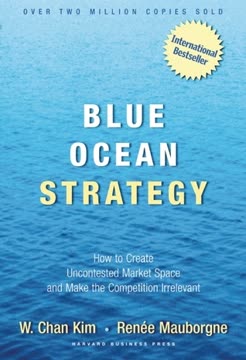Key Takeaways
1. Start-ups Follow a Predictable J-Curve Pattern
As this book’s first chapter explains, a start-up unfolds in a predictable pattern; the more aware you are of this pattern, the better able you will be to capitalize on it.
The J-Curve Defined. Start-ups don't follow a straight path to success; instead, they typically experience a dip in value after launch before climbing steeply upwards. This pattern, known as the J-Curve, consists of six phases: Create, Release, Morph, Model, Scale, and Harvest. Understanding this curve helps entrepreneurs anticipate challenges and make informed decisions.
Phases of the J-Curve:
- Create: The initial phase of idea generation, team building, and securing funding.
- Release: Launching the initial product or service into the market.
- Morph: Adapting and pivoting based on customer feedback and market realities.
- Model: Refining the business model to achieve profitability and sustainability.
- Scale: Expanding the business by adding people, processes, and capital.
- Harvest: Reaping the rewards of a successful venture, often through acquisition or IPO.
Navigating the Curve. By recognizing where you are on the J-Curve, you can better understand the challenges you face and the actions you need to take. This knowledge provides psychological reassurance and helps you avoid common mistakes, increasing your odds of success.
2. Ideas are Cheap; Execution is Everything
In fact, my partner, David, and I estimate that the initial idea’s value to a start-up is approximately 5 percent—and that number may be high.
The Idea is a Hypothesis. The initial idea for a start-up is just a hypothesis that needs to be tested and validated. Many successful companies started with ideas that didn't seem great at first, but their success came from superior execution. Uber, for example, initially seemed like a niche black-car service, but its execution transformed it into a global transportation giant.
Execution Trumps Ideas. The value of an idea is minimal compared to the importance of execution. A great idea with poor execution will fail, while a mediocre idea with excellent execution can succeed. Focus on building a strong team, iterating based on feedback, and adapting to market realities.
Types of Marketable Ideas:
- Problem-Solving: Addressing a clear need or pain point in the market.
- Visionary/Breakthrough: Creating something entirely new that people didn't know they wanted.
- Opportunistic: Capitalizing on timely events or circumstances.
3. Embrace the Morph: Change is Inevitable
In fact, it’s my belief, backed up by many conversations with start-up veterans, that drastic (not incremental) revisions to the original business plan happen in over 80 percent of successful start-ups.
The Morph Phase is Key. The Morph phase is where start-ups take feedback from the initial product release and make fundamental changes to their product, market, or strategy. This is not about minor tweaks but about significant pivots. FlexJobs, for example, completely flipped its business model from charging employers to charging job seekers.
Flexibility is Essential. Entrepreneurs must be willing to let go of their original ideas and adapt to market realities. Many successful companies, like Pinterest (originally Tote) and Twitter (originally Odeo), started with completely different concepts. The ability to listen to customer feedback and make drastic changes is crucial for success.
Iterate and Pivot:
- Listen to customer feedback, both positive and negative.
- Be willing to abandon or significantly alter your original idea.
- Focus on finding a product that resonates with customers.
- Move quickly through iterations and morphs.
4. Nail the Business Model Before Scaling
In this phase, you’ll focus on nailing the business model. Your goal is to reach the point where if you put more investment money into the business, more cash will be generated.
Business Model is Key. Before scaling, it's crucial to have a business model that generates more revenue than costs. This means understanding your customer acquisition costs, product costs, and revenue streams. The goal is to reach a point where additional investment leads to increased cash flow.
Focus on Profitability. The Model phase is about achieving a positive operating margin and generating positive cash flow. You need to know and drive down all your costs while maximizing your revenue. It's essential to prove that your business can generate cash before you start scaling.
Avoid Premature Scaling:
- Focus on product and customer traction before revenue models.
- Don't scale until you have a proven business model.
- Premature scaling can be financially devastating.
- Patience is key to developing a sustainable business.
5. Scaling Requires People, Process, and Money
More specifically, this is the phase where you assemble the people, processes, and money necessary to take the company to the next level.
Scaling is a Major Transition. The Scale phase is where you move from a small, insular team to a larger, more structured organization. This requires new people, new processes, and usually new money. It's a time of significant change and growth.
Three Key Elements of Scaling:
- People: Hire specialists with experience in larger companies.
- Processes: Implement systems and procedures to manage growth.
- Money: Secure the necessary capital to support expansion.
Avoid Common Mistakes:
- Don't scale before nailing the business model.
- Don't be afraid to bring in experienced professionals.
- Don't underestimate the amount of capital required.
6. Harvest: The Joy of "Puffball" Decisions
At this point in the life cycle, you are transitioning from start-up to a fully established business. As the name of this phase suggests, it’s often time for entrepreneurs to reap what they’ve sown.
Reaping the Rewards. The Harvest phase is where entrepreneurs transition from a start-up to a fully established business. It's a time to reap the rewards of your hard work and make strategic decisions about the future of the company. Decisions are now "puffball" decisions, where all options are good.
Key Decisions in the Harvest Phase:
- Should you expand through acquisition or organically?
- Should you take a great buyout offer?
- Should you provide liquidity to investors through a buyback, IPO, or company sale?
- How should you invest in the brand and additional products?
Long-Term Perspective. This is a time to think long and hard about short-term and long-term objectives. It's important to consider what's best for the long-term interests of the company, including investors, employees, customers, and yourself.
7. Failure is a Necessary Stepping Stone
The failures have been a critical part of my education, and history has taught me that the price of education goes up substantially after college.
Embrace Failure as a Learning Tool. Failure is an inevitable part of the start-up journey. Instead of fearing it, embrace it as a valuable learning experience. The key is to fail fast, learn from your mistakes, and adapt quickly.
Two Types of Failure:
- Operational Failures: Day-to-day mistakes that provide valuable feedback.
- Enterprise Failure: The complete collapse of the business, which should be avoided at all costs.
The Value of Fast Failure:
- Identify problems quickly.
- Address issues immediately.
- Move on to the next iteration.
- Avoid slow, agonizing failures.
8. The Personal Journey is as Important as the Business
More so than ever before, start-ups require a map to chart a course through innumerable and significant obstacles.
Start-ups are a Personal Journey. The start-up experience is not just about building a business; it's also about personal growth and development. You will be tested physically, emotionally, and mentally. Your relationships will also be tested.
Key Personal Traits for Success:
- Passion for your mission.
- Resilience in the face of setbacks.
- Comfort with the unknown.
- Perseverance and determination.
- Sales ability to attract investors, customers, and talent.
The Importance of a "Why." Your "why" is your deep-seated motivation for starting a company. It's what will sustain you through the tough times. It should be something bigger than yourself, something that you are truly passionate about.
9. Leverage the J-Curve in Large Organizations
In order to move forward, the world needs start-ups, the world needs innovation, and the world needs people like you to strike out on an adventure.
Innovation in Large Organizations. Large organizations often struggle with innovation due to their structure, processes, and culture. The J-Curve can be a valuable tool for fostering innovation within these organizations.
Applying the J-Curve in Large Organizations:
- Create small, protected teams that operate like start-ups.
- Allow these teams to experiment, fail, and iterate quickly.
- Leverage the organization's resources for scaling and distribution.
- Protect the teams from the corporate culture.
Advantages of Large Organizations:
- Existing infrastructure and resources.
- Established supply chains and distribution networks.
- Ability to leverage brand recognition.
Last updated:
FAQ
What's The Start-Up J Curve about?
- Entrepreneurial Journey: The Start-Up J Curve by Howard Love provides a structured approach to the start-up process, highlighting six phases: Create, Release, Morph, Model, Scale, and Harvest.
- Understanding the J Curve: The J Curve illustrates the initial decline in a start-up's value before significant growth, helping entrepreneurs anticipate and navigate challenges.
- Practical Guidance: The book offers actionable advice, tools, and assessments to help entrepreneurs understand their current phase and next steps for success.
Why should I read The Start-Up J Curve?
- Comprehensive Roadmap: It offers a complete guide for the entrepreneurial journey, beneficial for both new and experienced entrepreneurs.
- Real-World Insights: Howard Love shares lessons from his start-up experiences, providing practical insights that can save time and money.
- Psychological Reassurance: The book normalizes start-up challenges and offers strategies to overcome them, reassuring entrepreneurs they are not alone.
What are the key takeaways of The Start-Up J Curve?
- Six Phases of Start-Ups: Understanding the phases—Create, Release, Morph, Model, Scale, and Harvest—is crucial for maximizing success.
- Embrace Failure: Love encourages viewing failure as a learning opportunity, emphasizing adaptability and evolution based on feedback.
- Customer Feedback Importance: Continuous customer engagement and feedback are vital, especially during the Morph phase, to meet market needs.
What is the J Curve, and how does it apply to start-ups?
- Graphical Representation: The J Curve shows the initial decline in value before growth, illustrating the start-up's trajectory.
- Predictable Pattern: Understanding this curve helps entrepreneurs anticipate challenges and navigate the start-up journey confidently.
- Value Creation: Most value creation occurs in later stages, reinforcing the need for persistence and adaptability for long-term success.
What is the Create phase in The Start-Up J Curve?
- Initial Idea Development: Focuses on generating a viable business idea, assembling a strong team, and securing necessary funding.
- Importance of Team: A strong team with complementary skills is crucial, often serving start-ups better than solo entrepreneurs.
- Raising Funds: Entrepreneurs should raise sufficient funds early, as underestimating needs can jeopardize the start-up's future.
How does the Release phase work in The Start-Up J Curve?
- Getting the Product Out: Involves launching the minimum viable product (MVP) to gather customer feedback, even if it's not perfect.
- Avoiding Perfectionism: Love warns against procrastination and perfectionism, encouraging quick market entry.
- Customer Engagement: Emphasizes listening to customer feedback to refine the product, as successful start-ups listen the hardest.
What is the Morph phase, and why is it important?
- Embracing Change: Involves making significant changes to the product or business model based on customer feedback.
- Customer Traction: The goal is achieving significant customer traction, indicated by active engagement and promotion.
- Iterative Process: Morphing is necessary, with most successful start-ups undergoing multiple morphs, highlighting flexibility and adaptability.
How do I scale my start-up effectively according to The Start-Up J Curve?
- Timing is Crucial: Scale only after nailing the product and business model to avoid significant losses.
- Focus on People, Processes, and Money: Requires hiring specialists, refining processes, and securing additional funding for growth.
- Aggressive Marketing: Once ready, employ aggressive marketing strategies to attract a larger customer base.
What are common mistakes to avoid during the scaling phase?
- Accepting Lowball Offers: Be cautious of early buyout offers that undervalue the start-up's potential.
- Scaling Prematurely: Avoid scaling before establishing a solid product/market fit to prevent wasted resources.
- Ignoring Customer Feedback: Failing to adapt based on feedback can disconnect the product from market needs.
What strategies can I use during the Scale phase of the J Curve?
- Hiring Specialists: Bring in specialists to manage specific functions, allowing founders to focus on strategic decisions.
- Implementing Processes: Establish clear processes and structures to maintain efficiency and communication as the team grows.
- Financial Management: Ensure sufficient cash flow to support scaling efforts, avoiding overextension of resources.
How does The Start-Up J Curve address failure in entrepreneurship?
- Embracing Operational Failures: View operational failures as learning opportunities to build resilience and adaptability.
- Distinguishing Enterprise Failure: Avoid enterprise failure by proactively addressing issues before they escalate.
- Learning from Mistakes: Foster a culture of intellectual honesty to openly discuss failures and learn from them.
What personal qualities are essential for a successful start-up founder?
- Resourcefulness: Solve problems creatively and efficiently, often with limited resources.
- Resilience: Bounce back from setbacks, facing rejection and criticism while staying committed to the vision.
- Passion and Dedication: A strong connection to the start-up's mission drives founders through tough times.
Review Summary
The Start-Up J Curve receives high praise for its comprehensive overview of startup stages. Readers appreciate the practical advice, real-world examples, and clear framework it provides. Many find it valuable for both new and experienced entrepreneurs, highlighting its insights on pivoting, scaling, and avoiding common pitfalls. The book is commended for its readability and relevance to various business types. Some reviewers note that while it may not offer groundbreaking information for seasoned business professionals, it remains an excellent resource for those new to the startup world.
Similar Books










Download PDF
Download EPUB
.epub digital book format is ideal for reading ebooks on phones, tablets, and e-readers.




